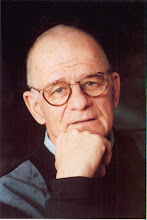Agency of the Future: Does It Even Exist (Yet)?
A friend of mine, we’ll give him the fictional first name of Hal, writes this deceptively simple query [and let me quote his intro because it was so flattering that I, oh-so-briefly, thought I might have the answer]:
Dear Andrew:
“You are so “well traveled” in this advertising industry and so wise, I thought to write this request of you. The world is changing around us inexorably. The advertising you and I have grown up on is diminishing, becoming eclipsed by the digital revolution which to me is really “the revenge of direct marketing”. Much more one-to-one communication than mass communication. Real and actual dialogue between companies and their consumers. Consumers are getting the upper hand. Companies HAVE to be completely transparent, or risk “getting pantsed” by their not-so-loyal consumers in a scathing blog. Mobile device media placements. Social networking…..
You know the rest. You know it all. I don’t have to beat this [dead] horse. But I have a simple request: Who do you think is “there” or ahead of us? Who should we study, model ourselves against? What agencies are leading the charge?
Regards, Hal
---------
Dear Hal:
After giving this question a great deal of thought--well at least an hour's worth--I discover that I have only glimmers of a new day aborning to offer. First there is no perfect agency of the future--just as there wasn't five years ago, when I wrote the reasonably perceptive, modest little book, “Casting for Big Ideas.”
One issue you have to address is how well do you want to “speak digital” without losing your leadership in traditional advertising, something Robert Greenberg of R/GA diminishes as “old line story telling?” If you really wanted to become thoroughly literate in digital, then you would have to remake your agency to go up against the likes of AKQA, AvenueA/Razorfish, Tribal DDB and Digitas. And as my favorite Irish Catholic priest would say, even on a good day they would kick the bejesus out of you.
So I'd be careful about following this path. So far the only mainline agency of size to take this route is Crispin. If you're a client and you give them an assignment, you can be sure that they're going to come back with a multi-layered, multimedia idea, that probably will start on the Web and finish in traditional as an afterthought.
A second line you could pursue is as a hybrid, as I believe Goodby, Wieden, TBWA, and to a lesser extent Martin, Mullen and Lowe/ New York are doing today. Hybrids have the ability to come up with “story-driven” ideas that live in traditional media as easily as they can come up with innovative, Web-based campaigns. And clients are comfortable paying full fare for their ideas and work--at the same time they may hire a digital agency to carry through on the digital part of the campaign--to assure they are getting the best of both worlds.
Then there are many agencies which really haven't made the adjustment to digital -- and are still swimming happily in the old world--because more often than not they are paired with strong digital players, and don't want to tread on another agencies “turf.” In fact, in many pitches these kind of agencies--which for the purposes of this blog will remain nameless--are invited to pitch paired with “their little brother” [translation: digital agency] in a joint effort, where the big, networked, old-line agency will be responsible for integrating all the work across all platforms.
In other words, Hal, if you were really to break with your profitable past and totally remake your agency, you would be one of the first to do so successfully.
A decade ago, I would have thought that one or two of the new “hot” boutiques in New York-Anomaly, Strawberry Frog, Taxi, 72andSunny, would have made this leap. But they didn't, really. Like I say, Crispin is the closest example we have of a successful big, medium-sized agency which is truly media-neutral. If there is another I don't know of it.
Signed,
Baffled

